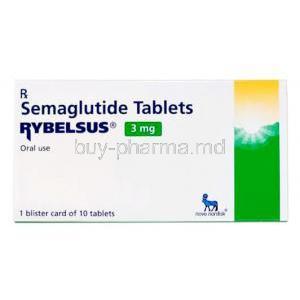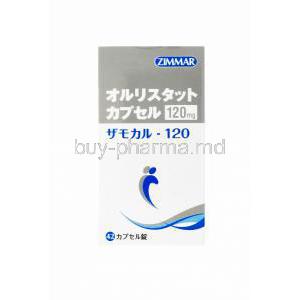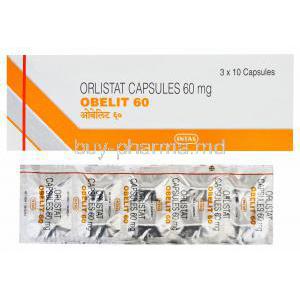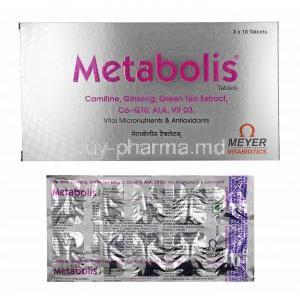Introduction to Cetislim (Cetilistat)
Cetislim, containing the active pharmaceutical ingredient Cetilistat, is an anti-obesity medication developed to combat excess body weight in individuals with a body mass index (BMI) classified as obese. As a pharmacological intervention, it serves as a powerful adjunct to lifestyle modifications such as calorie-restricted diets and regular physical activity.
Cetislim belongs to the therapeutic class known as lipase inhibitors. These agents specifically target enzymes responsible for fat digestion, providing a localized mechanism of action within the gastrointestinal tract without systemic absorption.
The medication has received regulatory approval in countries such as Japan and is being investigated or marketed in other territories under various brands. It is often compared to Orlistat, another lipase inhibitor, though Cetilistat tends to have a more favorable gastrointestinal tolerance profile.
Composition and Pharmaceutical Formulations
The primary active ingredient in Cetislim is Cetilistat, which exerts its anti-obesity effects by inhibiting fat digestion.
- Available strengths: 60 mg and 120 mg capsules
- Formulations: Oral capsules, sachets (for certain markets)
- Excipients may include lactose monohydrate, microcrystalline cellulose, and magnesium stearate
- Marketed under various names including Cetislim, Kilfat, and Checkwt
Mechanism of Action: How Cetislim (Cetilistat) Works
Cetislim works by inhibiting pancreatic and gastric lipase, the key enzymes responsible for hydrolyzing dietary triglycerides into absorbable free fatty acids and monoglycerides.
By obstructing this enzymatic activity, Cetislim significantly reduces the absorption of dietary fat in the small intestine, resulting in increased fat excretion via feces. This mechanism facilitates a caloric deficit, which is essential for weight reduction.
Unlike centrally acting weight-loss drugs, Cetislim operates locally within the gut, minimizing systemic exposure and reducing the risk of central nervous system side effects.
Approved Medical Uses of Cetislim
Cetislim is clinically approved for:
- Primary obesity management in adults with a BMI ≥30 kg/m²
- Overweight individuals (BMI ≥27 kg/m²) with associated comorbidities such as type 2 diabetes, dyslipidemia, or hypertension
- Adjunctive treatment in combination with calorie-restricted diets and regular exercise
Off-Label Uses and Investigational Indications
Beyond its approved uses, Cetislim is being explored for multiple off-label and investigational applications:
- Metabolic syndrome: May help in lowering abdominal obesity and improving insulin sensitivity
- Prediabetes: Potential for delaying progression to full-blown diabetes by assisting in weight control
- Non-alcoholic fatty liver disease (NAFLD): Investigated for its ability to reduce hepatic fat accumulation
- Polycystic ovary syndrome (PCOS): Used as an adjunctive therapy in obese women with PCOS to manage insulin resistance and hormonal imbalance
Dosage and Administration Guidelines
The typical dosage regimen for Cetislim is as follows:
- Adults: 60 mg to 120 mg three times daily, administered immediately before, during, or up to one hour after main meals containing fat
- Consistent use with fat-containing meals is essential for efficacy
- Missed dose: Skip the dose if a meal is missed or contains no fat
- Therapy should be evaluated after 12 weeks for effectiveness, with continuation based on clinical response
Administration in Special Populations
7.1 Elderly Patients
In elderly individuals, age-related physiological changes—such as reduced gastrointestinal motility or altered nutrient absorption—require cautious use of Cetislim.
- Monitor for fat-soluble vitamin deficiencies (A, D, E, K)
- Regular evaluation of nutritional status is recommended
7.2 Pregnant Women and Nursing Mothers
Cetislim is not recommended during pregnancy due to the absence of adequate safety data. Weight loss is generally contraindicated in pregnancy.
- Use only if the potential benefit justifies the potential risk to the fetus
- Unknown if Cetilistat is excreted in breast milk—avoid during lactation unless medically necessary
7.3 Pediatric Use
Use in children and adolescents under 18 is not established and generally discouraged.
- Lack of long-term safety and efficacy data
- Ethical and developmental considerations limit pediatric trials
Common and Serious Side Effects of Cetislim
8.1 Common Adverse Reactions
Due to its mechanism of action, gastrointestinal side effects are the most frequently reported:
- Oily or fatty stools (steatorrhea)
- Flatulence with oily discharge
- Fecal urgency and increased defecation
These effects are usually mild and transient but may be embarrassing or inconvenient for some patients.
8.2 Less Common but Serious Adverse Effects
Although rare, more significant complications have been observed:
- Fat-soluble vitamin deficiencies (especially with long-term use)
- Possible severe gastrointestinal disturbances such as abdominal pain or rectal discomfort
8.3 Long-Term Side Effects
Prolonged use of Cetislim may lead to concerns related to nutrient malabsorption:
- Chronic depletion of fat-soluble vitamins
- Potential decrease in absorption of essential fatty acids
- Impact on gastrointestinal flora and bowel habits
Supplementation and regular nutritional assessments are advised during long-term therapy.
Drug Interactions and Dietary Considerations
Cetislim (Cetilistat) demonstrates localized pharmacologic action within the gastrointestinal tract; however, it may still interact with specific substances that influence fat metabolism or absorption. Awareness of these interactions is essential for therapeutic optimization.
- Fat-soluble vitamins (A, D, E, K): Cetislim may reduce absorption, necessitating supplementation in long-term use. It is advisable to administer vitamin supplements at least 2 hours before or after taking the medication.
- Lipid-based medications: Drugs reliant on fat absorption for efficacy—such as certain immunosuppressants or hormonal agents—may exhibit reduced bioavailability when co-administered with Cetislim.
- Antidiabetic agents and antihypertensives: Cetislim is generally compatible, but weight loss may enhance the efficacy of these drugs, requiring dose adjustments to avoid hypoglycemia or hypotension.
- Dietary fat content: The therapeutic effect is contingent on dietary fat intake. The presence of moderate fat in meals is necessary for efficacy, but high-fat meals can exacerbate gastrointestinal side effects.
Warnings, Contraindications, and Important Precautions
10.1 General Warnings
Cetislim should be utilized strictly under medical supervision for the management of obesity. It is not a substitute for lifestyle interventions but should be employed as part of a comprehensive weight management strategy.
- Regular monitoring of weight, BMI, and nutritional status is advised throughout treatment.
- Periodic evaluation of treatment response and adherence to diet is crucial for continued benefit.
10.2 Contraindications
Cetislim is contraindicated in the following clinical conditions due to its mechanism of reducing fat absorption:
- Chronic malabsorption syndrome: May exacerbate nutrient deficiencies.
- Cholestasis or gallbladder disease: Fat malabsorption is a component of these conditions and may be worsened.
- Pregnancy: Weight loss during pregnancy is unsafe; Cetislim should not be used.
- Hypersensitivity: Contraindicated in individuals with known allergic reactions to Cetilistat or any excipients.
10.3 Precautions for Use
To ensure safe administration of Cetislim, the following precautions should be implemented:
- Supplementation with fat-soluble vitamins is recommended during prolonged therapy.
- Patients with pre-existing gastrointestinal disorders such as inflammatory bowel disease should be monitored closely for tolerance.
- High-fat meals should be avoided to reduce the incidence of steatorrhea and fecal urgency.
Careful Administration and Risk Management
Certain patient populations require tailored considerations to mitigate risks and ensure efficacy:
- Renal or hepatic impairment: Though Cetislim acts locally, clinical judgment is advised in compromised organ function due to potential metabolic alterations.
- Cardiovascular risk: Weight loss can benefit individuals with hypertension or dyslipidemia, but abrupt physiological changes may necessitate medication adjustments.
- Nutritional counseling: Essential to avoid imbalances in fat, protein, and micronutrients during calorie restriction.
- Ongoing monitoring: Long-term use demands evaluation for nutritional deficiencies, gastrointestinal tolerance, and therapeutic benefit.
Overdose and Emergency Management
Although systemic absorption of Cetislim is minimal, excessive intake may lead to distressing gastrointestinal symptoms:
- Symptoms: Profound diarrhea, abdominal cramps, oily stools, and potential electrolyte depletion.
- Supportive care: Includes fluid and electrolyte replacement and symptomatic relief.
- Emergency attention: Should be sought if dehydration, persistent vomiting, or signs of severe malabsorption occur.
Handling and Storage Instructions
Proper handling and storage of Cetislim ensure stability, efficacy, and safety:
- Store at controlled room temperature (15°C–30°C) in a dry place away from direct sunlight.
- Avoid moisture exposure by keeping capsules in original packaging until use.
- Discard expired medication safely. Do not flush or dispose in household waste; consult a pharmacist for appropriate disposal methods.
- Keep out of reach of children and pets.
Patient Counseling and Educational Considerations
Effective weight management with Cetislim requires informed participation by the patient:
- Dietary adherence: Emphasize the role of balanced, reduced-calorie diets and portion control.
- Lifestyle modifications: Regular physical activity and behavioral therapy enhance outcomes.
- Side effect awareness: Educate patients on expected GI effects and strategies to minimize them, such as avoiding greasy foods.
- Monitoring signs of complications: Teach patients to recognize symptoms of vitamin deficiency, severe diarrhea, or fatigue, which may indicate the need for clinical review.
Ongoing education and engagement improve treatment satisfaction, adherence, and long-term success in obesity management.






